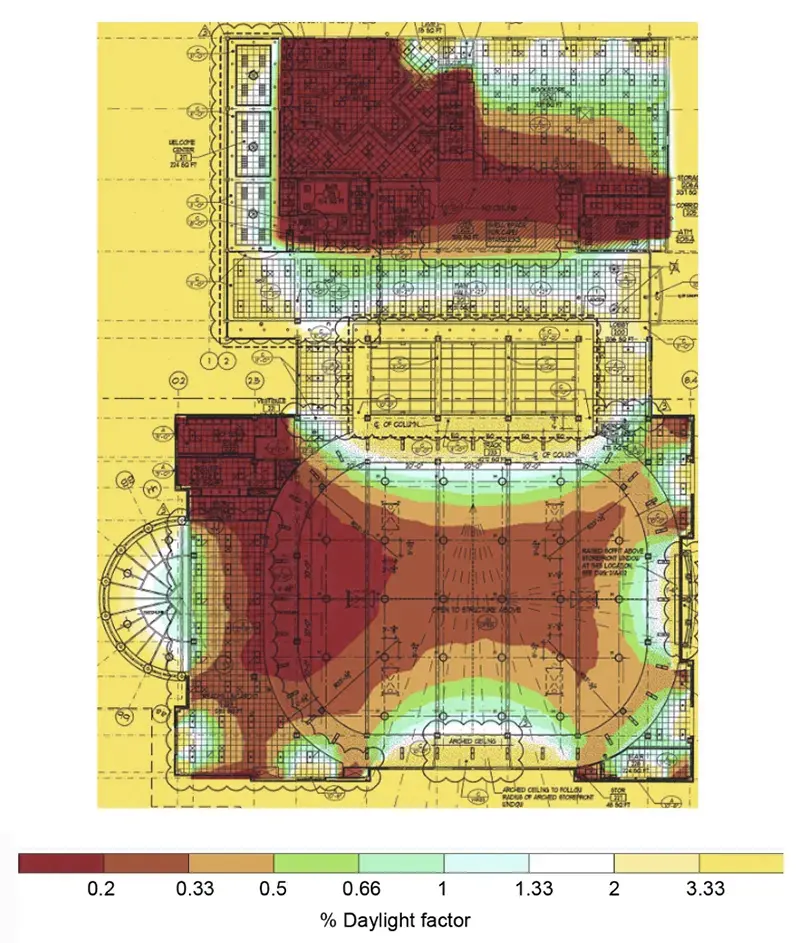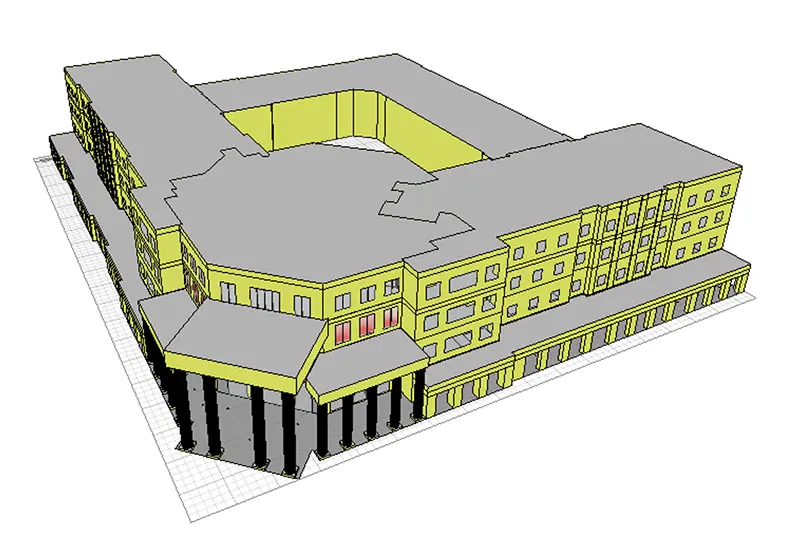La High Point University è un’università privata di arte situata ad High Point, in Nord Carolina. È nota per il suo forte impegno verso la sostenibilità, con l’implementazione di pratiche di bioedilizia, sistemi efficienti dal punto di vista energetico e programmi di riduzione dei rifiuti nel campus. Inoltre, la HPU integra la sostenibilità nei suoi programmi di studio e promuove la consapevolezza ambientale tra gli studenti e il personale. Siamo stati incaricati di condurre un’analisi della luce diurna per il campus.

High Point University
Type of Project: Educational
Luogo: High Point, North Carolina, United States
Region: North America

Sul Progetto


Risultati chiave e aree di miglioramento
- Utilizzo della luce diurna: Le aree vicino alle finestre ricevono una vasta quantità di luce naturale, rendendole adatte all’installazione di sensori di luce diurna. Questi sensori regoleranno l’illuminazione artificiale basandosi sulla disponibilità di luce solare, andando quindi ad ottimizzare l’uso dell’energia durante il giorno e riducendo l’uso dell’illuminazione elettrica.
- Bisogni di illuminazione artificiale: Gli spazi chiave interni, come le aree di lavoro e altre zone con un apporto insufficiente di luce naturale, avranno bisogno di migliorie sull’illuminazione. È consigliato sostituire le lampadine con i LED per migliorare l’efficienza energetica e i comfort di illuminazione in queste aree interne.
- Rilevatori di presenza: Per spazi con poca affluenza, come bagni o magazzini, è consigliata l’installazione di rilevatori di presenza. Questi rilevatori accenderanno le luci sono quando rileveranno una presenza, riducendo il consumo di energia non necessario in aree poco affollate.
- Strategie di sostituzione dell’illuminazione: Il piano include la sostituzione delle classiche lampadine con i LED nelle aree più affollate, come i luoghi di lavoro e i corridoi. Questo cambio mira a migliorare l’efficienza energetica e la qualità dell’illuminazione, assicurando che le aree più utilizzate siano ben illuminate e allo stesso tempo garantiscono una riduzione del consumo energetico totale.
- Test e regolazioni: I test sono stati fatti in zone specifiche per valutare i livelli di illuminazione. Ciò include l’identificazione di aree che siano troppo o troppo poco illuminate. I risultati sono stati usati per migliorare i piani di illuminazione per poter raggiungere condizioni ottimali e assicurare un’illuminazione appropriata per tutte le aree.
Valutazione del risparmio
Le nostre analisi e i nostri consigli hanno portato a stimare un risparmio energetico di oltre l’80% in varie zone in tutta l’università. Ciò si traduce in una riduzione di energia annua di più di 62,000 kWh, sottolineando il sostanziale efficentamento energetico e i conseguente risparmo sui costi.









